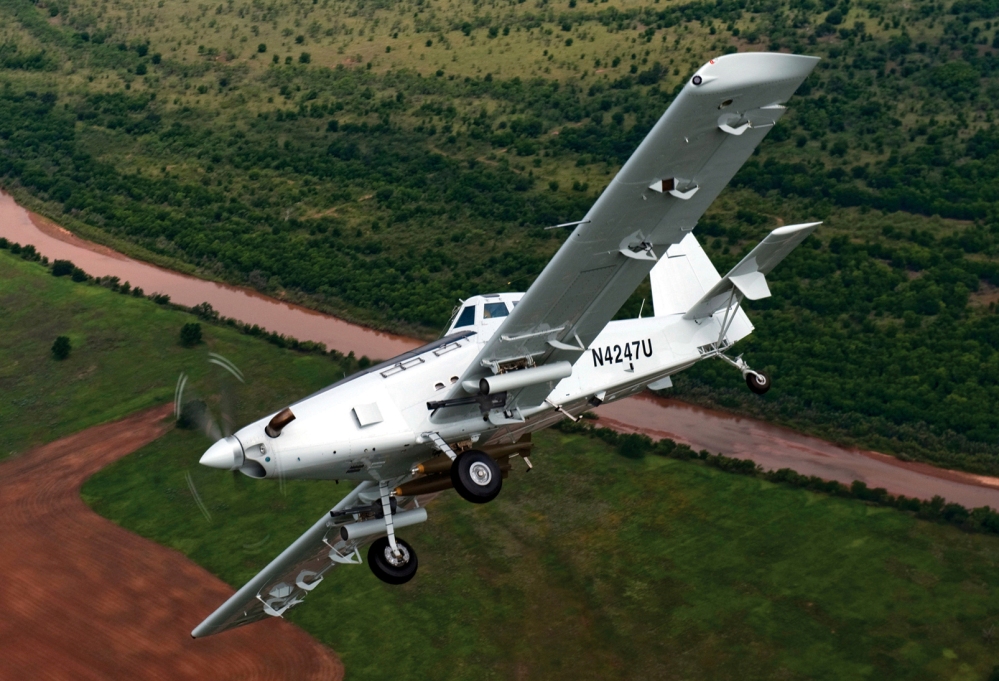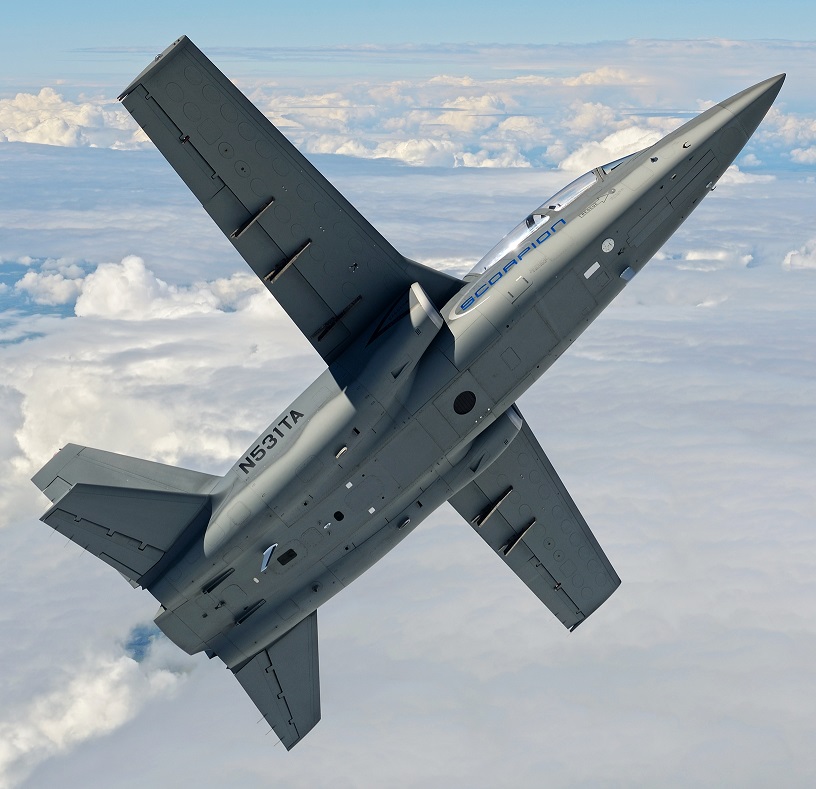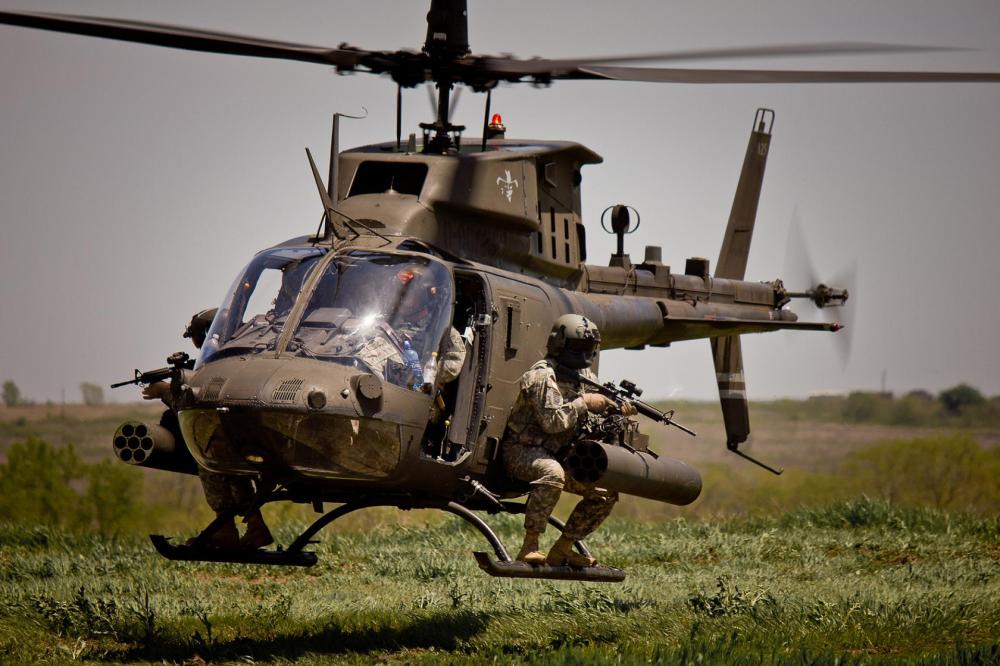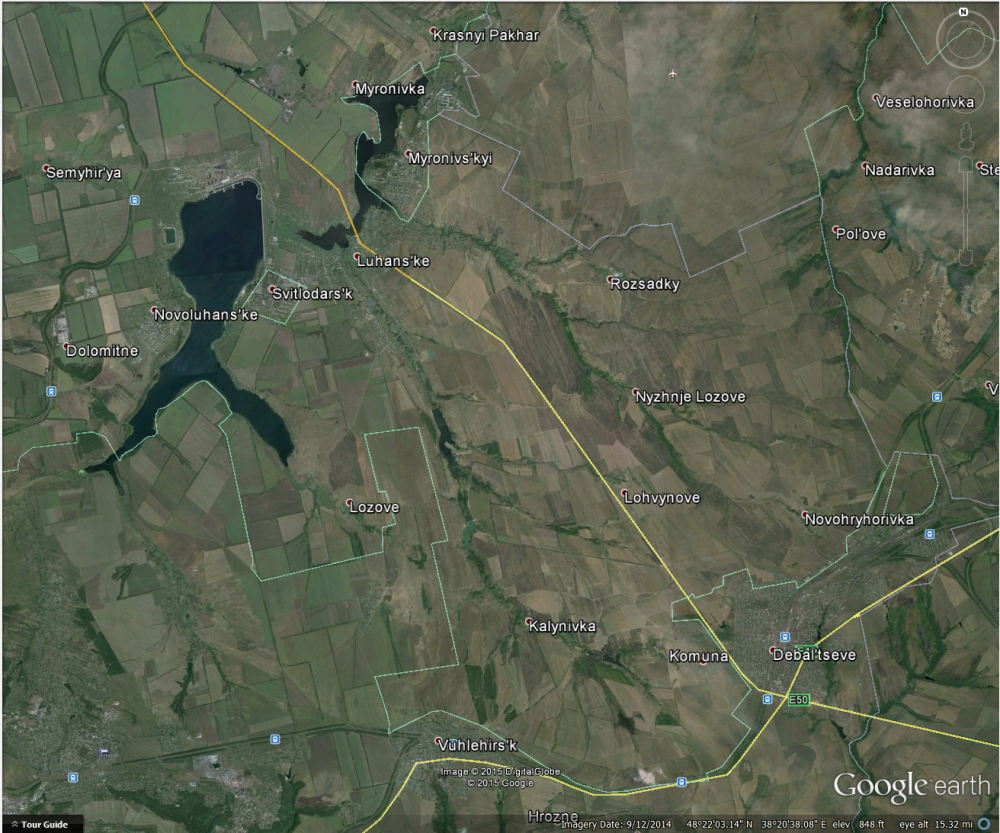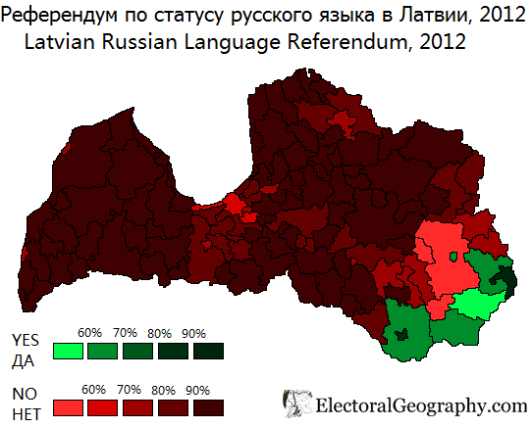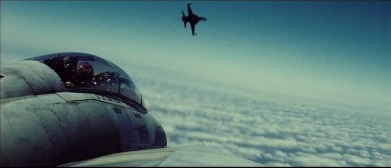The recent debate over the retirement of the A-10 Warthog and OH-58 Kiowa aircraft and helicopters respectively has sparked a very fervent debate over the future of the mission of close air support.[1] With the 2011 Budget Control Act still serving as a significant brake on U.S. military spending (with the Pentagon’s budget request coming to 3.24% of U.S. GDP), the cutting of both of these platforms is seen by the U.S. Air Force and Army as a sad but inevitable occurrence.[2] By detractors, however, both decisions are seen as hopelessly misguided ones, as they throw out the most effective (the Air Force) and most frequently used (Army) close air support assets.[3]
What this article will suggest, however, is that rather than splitting the mission of close air support (CAS) up by service, it may be a good idea to blend the efforts of the two services once more.[4] While this may not be a novel solution, it is one which may allow the U.S. military to retain a crucial, and importantly cost-effective, ability to support troops at the forward edge of the battle area. Before outlining why, however, the origins of the current split in close-air-support assets need to be explained.
Pace-Finletter MoU
The split in close-air-support asset types was first really delineated with the Pace-Finletter Memorandum of Understanding in 1952.[5] At a time when the USAF was still only five years old and when the Korean War was going on, both the U.S. Army and Air Force agreed to limit the size of U.S. Army fixed-wing strike aircraft to below 5,000 pounds in weight – deliberately precluding the opportunity for the Army to build up a capable fixed-wing CAS fleet.[6] This agreement was later built upon by the Johnson-McConnell agreement of 1966 which resolved the Air Force and Army to not command units of rotary- and fixed-wing aircraft respectively.[7]
While these existing agreements limit the Army’s options, the general climate between the Air Force and the Army would suggest that they could probably be overwritten.[8] No longer is the Air Force struggling to forge an identity as a service branch, or fighting with the same ferocity for budget dollars with the other services; it does not “need” the close air support mission to justify its independence. However, to override previous arrangements most effectively, the agreement would simply need to lift the limits on U.S. Army procurement of fixed-wing attack aircraft. Doing so would give the Army the most flexibility in their effort to fulfill the close air support mission. Given that the Congressional support for the A-10 in part hinges on the fact that no replacement for that aircraft is planned, giving the Army a platform to carry out the close air support mission would alleviate Congress’ concerns.[9]
Given the idea’s feasibility, then the important question then becomes, “how should the U.S. Army go about filling the role of close air support?” To answer that question adequately, however, requires a thorough understanding of the close air support mission.
Close Air Support Currently
The Joint Chiefs of Staff’s Joint Publication “Joint Publication 3-09.3: Close Air Support” defines close air support as: “air action by fixed-wing and rotary-wing aircraft against hostile targets that are in close proximity to friendly forces, and requires detailed integration of each air mission with the fire and movement of those forces.”[10] Colloquially, CAS has been described in a variety of ways, with “flying artillery” being a particularly apt one in this case. Historically, especially for fast-moving and mobile campaigns, aircraft have been used to provide fire support in place of artillery.[11] CAS is similar, though the versatility of aircraft (and their greater accuracy in many environments) means that a variety of different effects can be brought to bear against the enemy, from suppression fires, produced from cannon and machine guns,[12] to much larger precision fires such as 2,000lb Laser-Guided JDAM.[13] Most importantly, CAS is a mission most flown when air supremacy has been achieved. However, no matter the payload delivered, close-air-support-specific aircraft generally are designed around several principles; good visibility, slow speed, large amounts of aerodynamic lift, good loiter endurance at low altitude, the ability to deliver significant amounts of munitions and physical ruggedness.
Good visibility is important not only for pilots looking out of the cockpit but also for sensor pods (some are restricted by fixed landing gear, for example). Slow speed (or more specifically, low stall speed) is important especially for unguided munitions due to its effect on accuracy. The lower the speed of the aircraft, the higher the accuracy of the munitions on target. Lift is important because it allows for long loiter periods, but also maneuverability and turn capability, important for dodging missiles and getting inside enemy aircraft if need be.[14] Loiter endurance is important because of the ability it affords one to make multiple target passes, and to stay on station longer, lowering the number of aircraft one needs to devote to CAS, especially in a lower-threat environment. Having significant amounts of combat ordnance on hand is useful for obvious reasons, namely because you can destroy more targets in a single sortie. Finally, physical ruggedness, both in terms of resistance to enemy fire and ability to operate from a variety of different areas in terms of runways, is crucial for operating as close as possible to friendly troops, affording quicker response time.
These characteristics are, as mentioned, particular to fixed-wing aircraft, and all are applicable to the A-10, especially when compared to other aircraft such as the F-16. However, given the plans to retire the A-10 the question of how to replicate these characteristics without this and other aircraft needs to be asked. In particular, it is worth asking the question of how one would replicate these characteristics without simply bringing these aircraft back from the Boneyard, or by designing something all-new.
COTS[15] CAS
Answering that above question will need to involve an assessment of potential options to fill the role of close-air-support aircraft. Given the current budgetary pressures, any replacement will have to be extremely cost-effective – which almost always means products that have already been developed. In particular, this analysis will look at three classes of aircraft; Armed Agricultural, Light Prop Attack and Light Attack (Jet). While these platforms are undoubtedly less sophisticated than the A-10, for instance, as CAS platforms they have their merits, and in many ways are far more sophisticated than the Army’s principal CAS platform, the OH-58 Kiowa.[16] Hence, examining the options class-by-class, we can come to an understanding of exactly what could replace existing capabilities – and also how much each would cost.
Armed Agricultural
Armed Agricultural aircraft are, in terms of sophistication, the least sophisticated class outlined here. As the name indicates, these aircraft are essentially crop-dusters modified for military use, which, initially, sounds like a fairly ridiculous replacement for dedicated CAS aircraft such as the A-10. However, compared to scout helicopters such as the OH-58 Kiowa, their characteristics would likely lend themselves fairly well to the CAS mission. Firstly, they are aircraft designed to spend life at very low altitude – which gives them large wings, and long endurance, even with heavy payloads. Secondly, they have a slow enough speed (and stall speed) to make them useful for delivering ordnance, while still possessing higher-than-helicopter dash speed enabling them to reach battlefields faster. Thirdly, they are rugged enough to operate from virtually any strip, road, uneven grass or pavement, which means that they are capable of operating close to quickly-moving frontlines. Finally, many of the Armed Agricultural aircraft on the market are equipped with long endurance, enabling them to loiter over target areas for a long period of time, in some cases, much longer than even the A-10.
Aircraft in this class include the Air Tractor AT-802U and the IOMAX Archangel (both pictured below) and are both capable of carrying far more ordnance than Kiowa helicopters (more than twice the number of .50 cal machine guns and rocket pods, while also carrying 500lb bombs).[17] Interestingly, they are also much cheaper to procure and operate, if not as operationally flexible. As seen in the chart below, procuring and operating a fleet of AT-802U Air Tractors (one of the leading aircraft in the class) instead of OH-58D Kiowas would be significantly cheaper based on verifiable cost data for the aircraft in question – though the scale of the cost differential is likely to be narrower in favor of the AT-802 for several reasons.
One, the aircraft’s low cost per flight hour has not been demonstrated in hostile environments where the existing fleet is required to conduct missions at a very high operational tempo, as have the Kiowas. The lower number of annual flight hours means that the real cost per flight hour of the AT-802 is several times higher than the quoted $400 per flight hour.
Secondly, it is unlikely that so many (825) Air Tractors would be procured due to the higher budgetary strain this would impose through necessitating the training maintainers and pilots. This is another reason that the operating cost per flight hour for the Air Tractor is likely to be higher, as the number of airframes procured is likely to be equal to – or lower than – the Kiowa.[18] That number of airframes would have to endure a higher operational tempo, which in terms of fuel and maintenance support, would drive up costs.
Finally, the relative inflexibility of the Air Tractor’s employment compared to the Kiowa, while the Air Tractor’s dollars will perhaps buy more effectiveness in the CAS and surveillance roles, it will not buy as effective overwatch capability or vertical take-off and hovering capability.[19] That being said, it is likely that the Air Tractor and other aircraft in the Armed Agricultural class still have a lower operating cost than the Kiowa, and would be, due to their low speed, and high munition loads, quite suitable for the CAS mission – especially compared to helicopters (frankly, of almost any type) in the CAS role.[20]
Figure 1: Air Tractor vs. OH-58D Kiowa procurement and operating costs[21]
| Aircraft Type | Airframe Cost ($k) | Estimated Sensor Suite Cost($k) | Fleet Size | Operating Cost per Flight Hour | Annual Number of Flight-Hours Per Aircraft | Annual Cost of Fleet Operation ($k) | Total Cost of Fleet Ownership ($k) | Total Number of Flight Hours(k) |
| OH-58D Kiowa | – | – | 338 | $2,931 | 1080 | 1,069,932 | 21,398,640 | 5,476 |
| AT-802U Air Tractor | $3,000 | $3,000 | 825 | $400 | 450 | 148,500 | 5,370,000 | 5,569 |
Figure 2: AT-802U Air Tractor
Figure 3: IOMAX Archangel Block 3
Light Prop Attack
Light Prop Attack aircraft, by contrast with Armed Agricultural aircraft, are more sophisticated aircraft. Aircraft of this class (for instance, such as the Beechcraft AT-6, Embraer Super Tucano, and KAI KA-1) are are faster, with top speeds of 300kts compared to 200kts,[22] built for a greater variety of missions, including air patrol,[23] and typically have more sophisticated avionics and sensor systems, allowing them to operate with a lower pilot workload and in denser weather conditions.[24]However, the cost of these aircraft is significantly higher – from $10 million for the KAI KT-1 to up to $20.8 million for the U.S.-manufactured Super Tucano.[25] However, their cost per flight hour is comparable to Armed Agricultural aircraft (~$1,000 per flight hour) and in some cases, they are capable of operating from unprepared airstrips.[26]
Their disadvantages, however, do exist. In addition to the cost, these aircraft, not being derived from crop-dusters, are not designed to spend their time at low altitudes, for one. Secondly, having retractable landing gear, they are not as rugged, especially with regard to takeoff and landing, as an Armed Agricultural aircraft is, an important consideration given the need to be near the frontline for higher responsiveness (though higher dash speed could potentially make up for this). Finally, due to the airframe being more optimized for speed, endurance suffers – even the Super Tucano, an aircraft with the highest endurance in-class, has only 6h 30min of endurance; not the 10 hours regularly achieved with Armed Agricultural aircraft.[27]
While proponents of the Light Prop Attack class will point to the fact that the ruggedness and endurance are sufficient for a variety of customers, their multi-mission capabilities, compared to those of Armed Agricultural airplanes, seem too well developed for the CAS mission. Granted, these aircraft are phenomenal performers in their own right, and would be a valued “low” component of a mixed-sophistication air force, allowing a cheap and readily deployable method of delivering bombs on target and carrying out light air defense. However, every aircraft ever designed is a compromise, and for the U.S. in particular, I believe it makes sense to argue that Armed Agricultural aircraft are a better fit because of their superior ruggedness, endurance, and lower operating costs. While they are not capable of carrying out light air defense missions, flexibility is ultimately not a crucial requirement for the CAS mission, and does little but add cost and complexity.
Figure 4: Embraer EMB 314 Super Tucano
Figure 5: Beechcraft AT-6C
Figure 6: KAI KA-1
Light Attack (Jet)
In this final class, there is only one particular aircraft capable of being considered: the Textron AirLand Scorpion. Given the fact that this aircraft has not yet been delivered to its first customer, the cost projections may indeed be wildly inaccurate, laying to waste the crux of Textron’s business plan and the structure of this article. However, if this aircraft eventually does what it says “on the tin”, it would be a valuable platform, even for a USAF customer. The aircraft is stated to cost $20 million per platform, a cost which I seriously doubt would include training and support, and could be expected to be a significant amount higher, perhaps $28-30 million with everything included. The reported operating cost per flight hour is $3,000 – higher than Light Prop Attack aircraft, but still reasonable considering the operating cost per flight hour of an A-10 is $17,716 as of fiscal year 2013.[28] At this operating cost, and assuming the $8 million markup holds, buying and operating the Scorpion would be roughly half the cost of the A-10 for the rest of the A-10’s service life (13 years).[29] Granted, standing up a new platform would incur costs that do not factor into that consideration – but the magnitude of those costs is not likely to undermine this fundamental fact: that based on current estimates, the Scorpion is very cheap.
Figure 7: AirLand Scorpion, A-10 Procurement and Operating Costs[30]
| Aircraft Type | Airframe Cost ($k) | Estimated Sensor Suite Cost($k) | Fleet Size | Operating Cost per Flight Hour | Annual Number of Flight-Hours Per Aircraft | Annual Cost of Fleet Operation ($k) | Total Cost of Fleet Ownership ($k) | Total Number of Flight Hours(k) |
| Textron AirLand Scorpion | 28,000,000 | – | 350 | $3,000 | 300 | 315,000 | 13,895,000 | 105 |
| A-10 | – | – | 350 | $17,716 | 300 | 1,860,180 | 24,182,340 | 105 |
Figure 8: Textron AirLand Scorpion
Operationally, the aircraft is not purpose-built for close air support, a fact that the supporters of the A-10 are likely to allege is the reason why the Scorpion is not a “suitable replacement”. However, the Scorpion does have several strengths which play strongly into CAS duties. For one thing, unlike typical fast jets, the Scorpion has excellent endurance of up to 5 hours’ time on station. That is more than double the A-10’s endurance.[31] Secondly, it has a two-man crew, which the A-10 does not, better divvying up workload and freeing air planners from the necessity of operating aircraft in pairs, as A-10s frequently do.[32] Thirdly, the aircraft is capable of flying just as “low and slow” as the A-10 is, ensuring the accuracy of unguided weapons.[33] The aircraft is not as resistant to small-arms and AAA fire, admittedly, but unlike the A-10 it is not burdened electrically by the need to operate a massive cannon, meaning that more sophisticated EW and radar / IR jamming equipment can be mounted onboard to improve survivability.[34] Plus the fact that it has a second seat means that this GIB[35] can more effectively operate these EW and IR jamming systems than on the A-10, given that pilot’s already high workload.
However, it is clear that the replacement of the A-10, if indeed it is to occur, is not going to be directly achieved with purchasing the Scorpion or a product like it. But if the U.S. Army were to replace its Kiowas with an Air Tractor or something comparable, it could massively increase its effectiveness in CAS roles and reduce the pressure on the Air Force’s existing CAS fleet. That then would open up the Air Force to procure the Scorpion (if it worked as advertised) to augment this capability. With the money saved by procuring the Scorpion, one could easily break off a segment of the Scorpion fleet (or even the entire 350-aircraft fleet itself) and dedicate it to close-air-support duty. This would mean that like the A-10, Scorpion pilots would be trained 24/7/365 to carry out close-air-support and nothing but it – a factor which is consistently underappreciated in why A-10 pilots are so successful at helping ground troops.
In short, while the retirement of the A-10 and the OH-58 Kiowa is a loss for the close air support capability of the U.S. Army and U.S. Air Force, should budget caps be rescinded and investment opened up again, it would make sense for the U.S. Army and U.S. Air Force to not stick to what is known – and procure new aircraft to carry out the close-air-support roles for both services. By procuring fixed-wing aircraft to deliver CAS for the Army, and more cost-effective ones to do so for the Air Force, the CAS mission will be well served.
Sources:
[1] Here, “close air support” is defined as the delivery of aerial fires (bombs, missiles, cannon rounds, etc.) to the forward edge of the battle area. http://fas.org/man/dod-101/army/docs/fm101-5-1/f545-f.htm#FEBA
[2] http://www.newsweek.com/us-military-spending-lot-or-lot-more-305019
[3] http://www.realcleardefense.com/articles/2014/01/22/save_the_a-10__give_it_to_the_army_107047.html, http://www.army.mil/article/144918/Armed_Aerial_Scout_still_valid_requirement__Army_says/
[4] http://snafu-solomon.blogspot.com/2012/02/modest-proposal-scrap-key-west.html
[5] http://xbradtc.com/2011/06/20/army-fixed-wing-cas-pt1/
[6] http://books.google.com/books?id=uC1I3vTSaEsC&pg=PA241&lpg=PA241&dq=Pace-Finletter+MOU+1952&source=web&ots=2hZwRweXe-&sig=q4QNY2qYfBCYGe9ImDc-YHuJjsU&hl=en&sa=X&oi=book_result&resnum=4&ct=result#v=onepage&q=Pace-Finletter%20MOU%201952&f=false
[7] http://archive.defensenews.com/article/20140512/DEFFEAT05/305120022/Commentary-Give-10s-Army, http://www.dtic.mil/ndia/2008systems/7131jacques.pdf
[8] See, for instance the fact that, with the exception of a couple, most of the proponents for the A-10 have been either JTACs or USAF A-10 pilots, and not U.S. Army personnel (certainly not U.S. Army brass): https://arizonadailyindependent.com/2014/06/15/a-10-preferred-by-jtacs-for-troops-in-contact-fight/, http://www.bloomberg.com/bw/articles/2014-05-15/soldiers-fight-to-save-a-10-warthog-jet http://thehill.com/policy/defense/205312-armys-odierno-troops-believe-in-the-a-10 – “Odierno said he believed the Air Force would find the right mix of aircraft to make up for the Warthog” http://blogs.cfr.org/davidson/2015/03/05/the-air-forces-argument-to-retire-the-a-10-warthog-doesnt-add-up-heres-why/#comment-44436
[9] http://www.mccain.senate.gov/public/index.cfm/opinion-editorials?ID=6a20a884-6e03-446f-a99e-a0f9627a7b4f
[10] https://fas.org/irp/doddir/dod/jp3_09_3.pdf
[11] The role played by the Luftwaffe’s Ju 87 Stukas in the Barbarossa campaign, when panzer and mechanized divisions frequently outran the mass of horse-drawn field artillery, is archetypal of “flying artillery”
[12] https://www.youtube.com/watch?v=a0-lOQFnXUQ – See here
[13] http://defense-update.com/20100928_laser_jdam.html#.VSnJ1_nF98E
[14] https://www.youtube.com/watch?v=rEdy84YGf1k
[15] Commercial-Off-The-Shelf; not directly applicable here, but used to refer to the fact that market-only options are being used
[16] http://www.army.mil/article/144918/Armed_Aerial_Scout_still_valid_requirement__Army_says/
[17] http://www.802u.com/ , http://www.iomax.net/pdf/IOMAX_Archangel_Brochure.pdf
[18] See also: http://webcache.googleusercontent.com/search?q=cache:DPLVVcHGfrgJ:vendornet.state.wi.us/vendornet/wais/docs/14610_1.XLS+&cd=8&hl=en&ct=clnk&gl=us
[19] The Kiowa is frequently used in overwatch roles: http://www.fayobserver.com/military/with-the-troops-kiowa-pilots-have-been-protecting-soldiers-on/article_14e480cb-306f-5b97-98db-52d7705165d9.html http://www.mensjournal.com/magazine/kiowa-helicopters-americas-new-cavalry-20131211
[20] http://aviationintel.com/amy-say-goodbye-oh-58-kiowa/
[21] The total cost of fleet ownership includes aircraft procurement as well as 20 years of fleet operation costs. List of sources: https://www.fbo.gov/index?s=opportunity&mode=form&id=5f604bd69a18b4848a7162a49b02ca72&tab=core&_cview=1, http://www.flightglobal.com/news/articles/lima-air-tractor-goes-on-the-offensive-383891/ – AT-802U operating costs, http://www.asafm.army.mil/offices/office.aspx?officecode=1400, http://www.defensemedianetwork.com/stories/keeping-the-oh-58-kiowa-warrior-flying-and-fighting/ – OH-58D costs
[22] http://www.802u.com/, http://aviationweek.com/defense/hawker-beechcraft-6c
[23] http://www.defencereviewasia.com/articles/190/Super-Tucano-leads-the-flock – Python 4 missile integration, http://defensetech.org/2011/09/21/at-6-tested-for-light-air-defense-missions/
[24] Not to say that Armed Ag planes do not have this capability, just that they are not typically deployed with those systems due to the additional cost. It is likely that the UAE’s IOMAX AT-802Us have some sort of night attack / bad weather capability. http://www.iomax.net/archangel/avionics/
[25] This cost also likely includes training for the Afghan Air Force; and it should be noted that SNC and Embraer built an entire production line specifically for 20 aircraft, further inflating the cost: http://www.dodbuzz.com/2013/06/25/beechcrafts-bid-was-higher-risk-air-force/
[26] This capability varies; the Super Tucano is capable of this, and perhaps the KT-1 is as well, but the AT-6 has notably come under fire for its perceived shortcomings in this area. http://aviationweek.com/defense/hawker-beechcraft-6c
[27] http://www.airforce-technology.com/projects/super_tucano/ http://www.janes.com/article/38800/iomax-offers-archangel-light-attack-turboprop-to-the-philippines
[28] http://nation.time.com/2013/04/02/costly-flight-hours/
[29] This is also assuming that the A-10’s operating cost per flight hour will not increase, which it plainly will as it ages.
[30] http://www.afsec.af.mil/shared/media/document/AFD-150116-014.pdf,
[31] http://www.scorpionjet.com/files/TAL-2014-OVERVIEW-LITHO.pdf
[32] This, I would argue, not only lowers costs, but because the guy in the back doesn’t have to worry about flying the airplane (as an A-10’s wingman would), spotting the enemy will be quicker.
[33] https://www.youtube.com/watch?v=sMfYIjsGEmQ
[34] The power generation capacity of the A-10 has improved, but it is likely that it is fairly limited still. http://www.lockheedmartin.com/us/products/a10.html
[35] Guy in the Back
